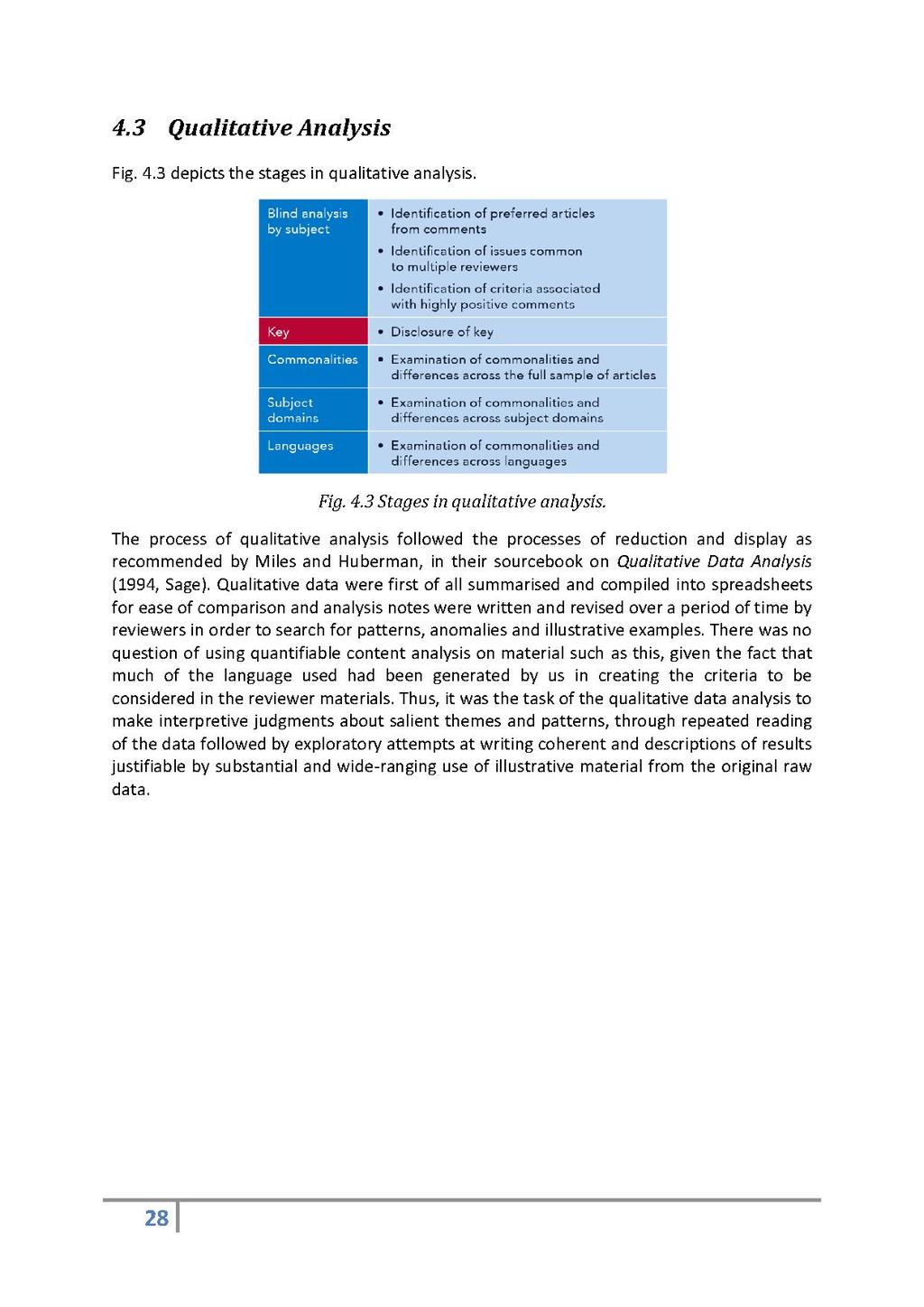4.3 Qualitative Analysis
Fig. 4.3 depicts the stages in qualitative analysis.
| Blind analysis by subject |
|
| Key |
|
| Commonalities |
|
| Subject domains |
|
| Languages |
|
Fig. 4.3 Stages in qualitative analysis.
The process of qualitative analysis followed the processes of reduction and display as recommended by Miles and Huberman, in their sourcebook on Qualitative Data Analysis (1994, Sage). Qualitative data were first of all summarised and compiled into spreadsheets for ease of comparison and analysis notes were written and revised over a period of time by reviewers in order to search for patterns, anomalies and illustrative examples. There was no question of using quantifiable content analysis on material such as this, given the fact that much of the language used had been generated by us in creating the criteria to be considered in the reviewer materials. Thus, it was the task of the qualitative data analysis to make interpretive judgments about salient themes and patterns, through repeated reading of the data followed by exploratory attempts at writing coherent and descriptions of results justifiable by substantial and wide-ranging use of illustrative material from the original raw data.
28
